Detectable Preventable: Promoting Colorectal Cancer Screenings Within the Filipino-American Community
- Global Health

In partnership with Cedars-Sinai Research Center for Health Equity (CRCHE), this Designmatters and Graphic Design studio challenged ArtCenter students to create a comprehensive multi-modal campaign targeted to the local Filipino-American community to encourage colorectal cancer screenings and bring awareness of the the increasing rate of cancer diagnoses within the population.
ArtCenter students engaged with researchers, doctors, healthcare providers, behavioral scientists, community organizations, and leaders of ethnic and immigrant groups to understand the history, makeup and values of the local Filipino-American community as they created a final campaign based on empathy and cultural awareness.
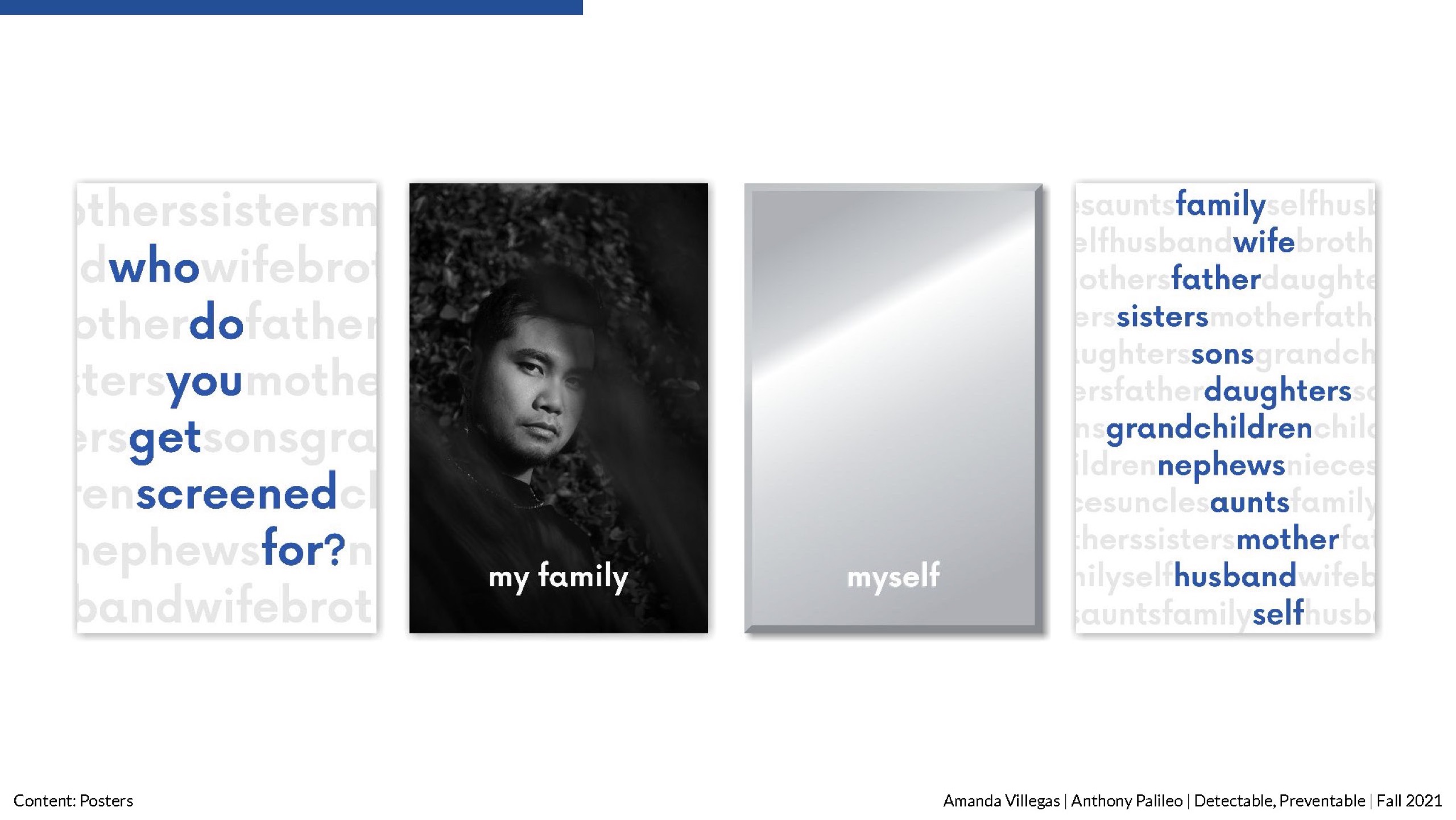
“I have firsthand experience with the horrors of cancer, because I lost my husband to an aggressive bladder cancer. Initially, I struggled to approach this topic without inserting too much of my personal experience into the project, as I learned that balancing fear and optimism was essential to speaking to our target audience. I feel that my experiences helped me approach this topic with a greater empathy and understanding and eventually led to the emotional components in the campaign my partner and I created.”
— Amanda Villegas, Photo & Imaging student
Project Brief
According to data currently being gathered by Cedars-Sinai Research Center for Health Equity, Filipino-Americans may have an increased risk for certain types of cancer, including colorectal cancer. Researchers know that early detection via cancer screenings is effective in reducing incidence and mortality rates for these diseases, but many people have never been screened, or have fallen behind on these screenings over the past two years due to COVID-19 and its impact on health services. In this Designmatters and Graphic Design co-hosted Studio, students designed a comprehensive multi-modal awareness campaign with the goal of facilitating access to and increasing the rate of cancer screenings in the Filipino-American population. The Detectable, Preventable project seeks to bring awareness to this issue so as to revert its current trend.
By engaging with researchers, doctors, healthcare providers and community organizers, students gained a deeper understanding of the history and values of the local Filipino-American population – and some of the reasons they don’t get screened.
About Cedars-Sinai Research Center for Health Equity
Through research, service and policy on local and state levels, the Cedars-Sinai Research Center for Health Equity addresses the inequalities that exist in Los Angeles County’s underserved communities.
The Center was developed as part of the Samuel Oschin Comprehensive Cancer Institute at Cedars-Sinai, and encompasses a wide range of research from molecular/genetic to behavioral and research-driven Community Outreach and Engagement (COE). The Center has established partnerships with many diverse Los Angeles-area community organizations and collects research at the state, national and international levels.
COE efforts focus on compliance with cancer screening guidelines and major behavioral and lifestyle factors including physical activity levels, cigarette smoking habits and access to the latest and most accurate cancer information.
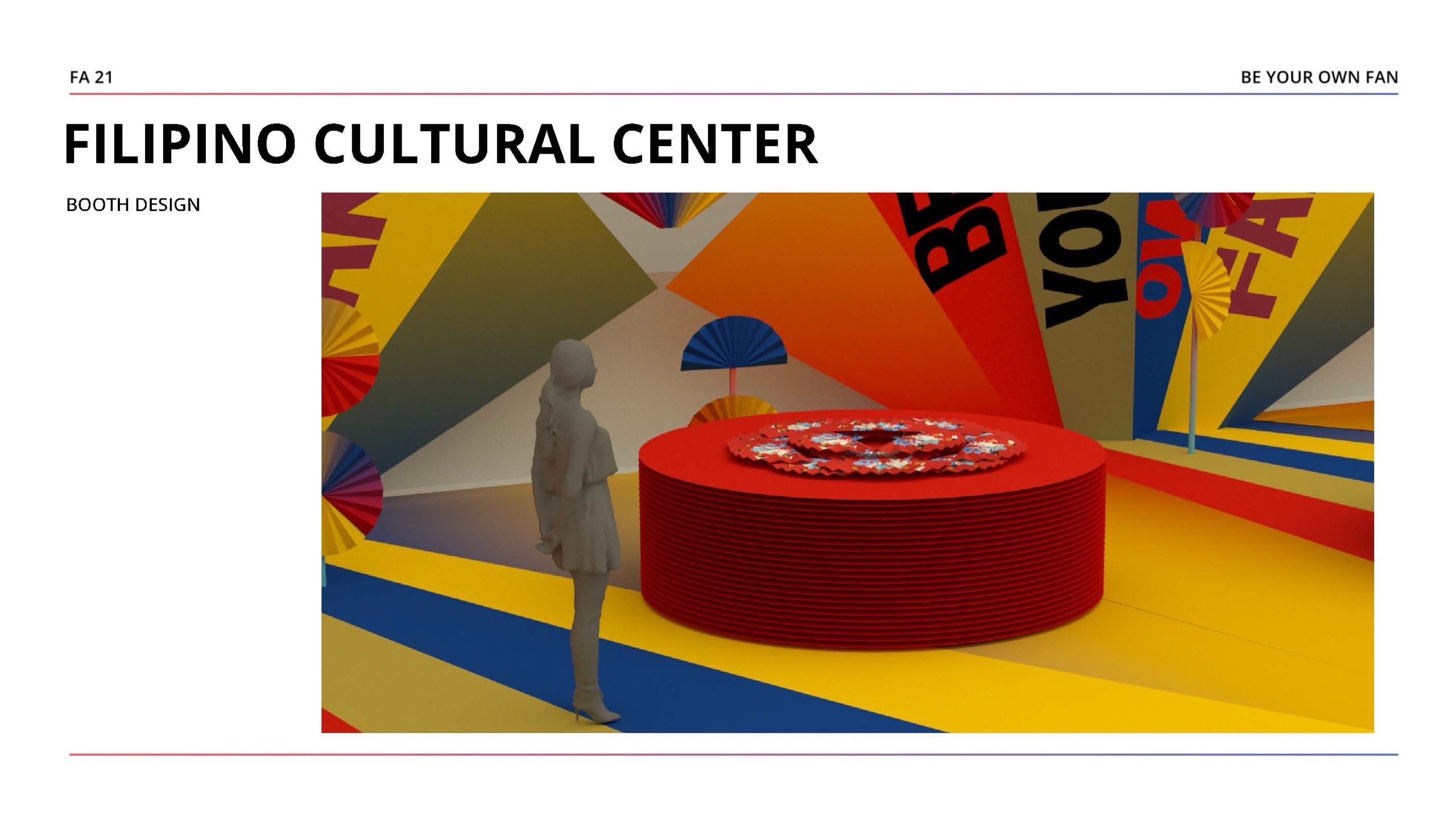
“The students are imaginative and talented. I was so impressed how they were able to immerse themselves in the Filipino culture and set aside their own biases by actively listening to our feedback and the community stakeholders’ insight. Designmatters is a warm, communicative and flexible group that understands the mission and vision of this campaign and brought it to life.”
— Shane Esmundo, Community Outreach Coordinator, Filipino Communities, CRCHE
About Filipino Americans and Cancer Screenings
The Filipino American community is the second largest Asian American subgroup in the United States and in Los Angeles; they have the second largest proportion of college graduates among Asian Americans in Los Angeles County.
A strong family bond unites Filipino Americans who also enjoy large social gatherings, food sharing and storytelling. Organized religion is very important in the community with the majority identifying as Catholic.
Filipino women have some of the highest rates of breast cancer, while prostate cancer is the most common cancer for men. Colorectal cancer is the second most common cancer in women and third common in men.
Overall, the community engages in a variety of high-risk behaviors that can lead to a cancer diagnosis. Smoking is common among Filipino Americans who also tend to adopt Western diets (fast food, sugary beverages, excessive meat, etc.). Cancer screening services/tests are low in the community which often results in late stage diagnosis and high mortality rate when compared with the general population.
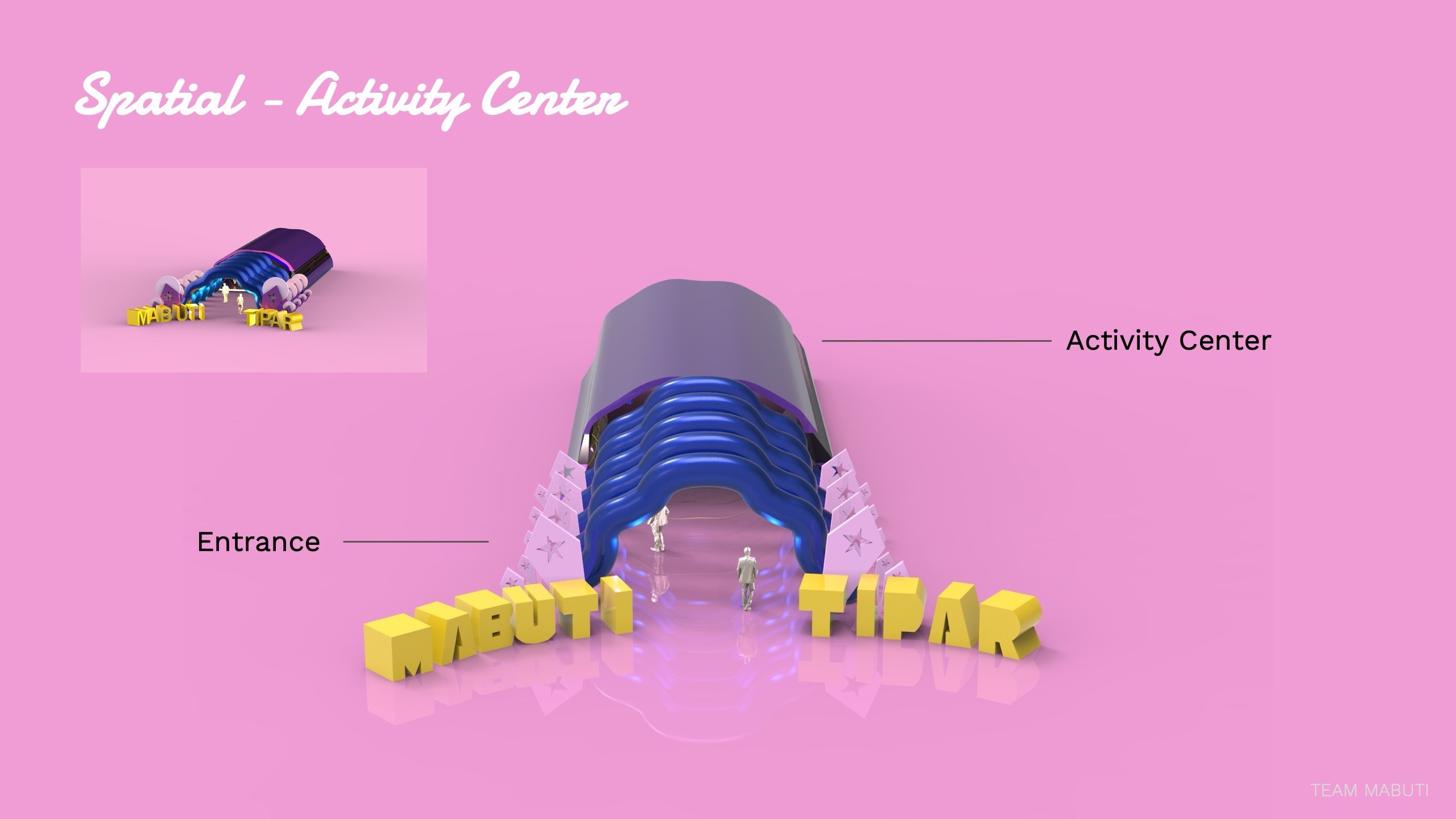
Research and Project Development
To kick off the studio, key members of the Cedars-Sinai team offered a series of fact-rich presentations that introduced students to the target audience and barriers they have discovered that prevent this community from receiving preventative cancer screenings.
Shane Esmundo, Community Outreach Coordinator at Cedars, presented the students with profile summaries of the Filipino-American community. She outlined typical characteristics of the local community: most tend to be college graduates and many are employed in health-related fields. Family and social gatherings are mainstays with regular cultural celebrations and food festivals taking place at private homes and community centers.
Overall, the community forgoes many health and cancer screenings; Esmundo suggested many factors contribute to the community’s ambivalence about preventative care and cancer susceptibility: a poor Westernized diet, high rates of smoking, a fast-paced lifestyle and a shared fatalistic attitude of “whatever happens will happen.”
Students then heard from Dr. Loraine Escobedo who shared results of an ongoing survey started in 2018 to track healthcare habits in the Filipino community – including mortality rates and the effectiveness of early cancer screening interventions.
Some results: 66 percent were born in the Philippines; 50 percent have immigrated to the US more than 10 years ago. Other collected data included: primary language spoken (English), social media use (Facebook and IG are popular along with texting and WhatsApp), medical history (top chronic conditions: hypertension, diabetes, high cholesterol, arthritis) and health care access (60 percent have routine checkups, but typically get health information from friends, family and the Internet).
Escobedo outlined the top barriers that keep Filipino Americans from scheduling cancer screenings: they don’t feel sick, don’t know when to get screened, too busy and have little time, and don’t know where to go to get screened. Top motivators to getting screened: wanting to stay healthy, a procedure covered by insurance, and doing it for their family.
Students then heard a research presentation by Chris Almario MD, MSHPM, associate professor-in-residence of Medicine at Cedars. He discussed that colon cancer is the third most common cancer in America but also is the most preventable one when diagnosed early. Overall, numbers are low across the country for Filipino Americans who get screened for colon cancer, not just in the Los Angeles. The two most common screenings are colonoscopies and the mail-in FIT tests.
Almario discussed the results of Cedars-sponsored focus groups which quizzed Filipino Americans about their attitudes about health screenings. Some highlights:
· Health care is reactive more than preventative; possibly a holdover from new immigrants. In the Philippines, health care is paid for in cash. Why pay for something when you are feeling good?
· Cancer – especially colon – is a taboo subject, not brought up in casual conversation. It’s discussed, however, if a friend/family member has a test or has been diagnosed.
· There’s a general lack of information about what the test is, how old you should be to have, where to go, etc.
Following the presentations, students were invited to ask questions in Zoom breakout rooms with the panelists. In these small groups, students explored the problem, sifted through the current research/information and started their ideation process.
Later, instructor Melissa Liu offered students a bigger picture of health equity and health disparity – outlining how certain populations experience unfair barriers in access to health care. Health is often shaped by the community conditions in which residents live, learn, work, play and worship. Liu gave examples of families living near industrial areas as well as obesity rates in economically disfranchised neighborhoods where there is little available of quality food/drink, and no public safe spaces for physical activities among other factors.
Finally, an overview of Filipino Americans density in Los Angeles revealed that 25 percent live in Filipino-town but others reside in adjacent communities of Westlake, Koreatown, East Hollywood, Silver Lake and Echo Park. Additionally, 8 out of 10 Filipinos identify as Catholic, and research shows that churches are a trusted and preferred source of support and health information.Students were divided into teams and started to brainstorm with each other; they were encouraged to explore in-person the Filipino community by attending local events, Filipino markets, festival and other gathering locations.
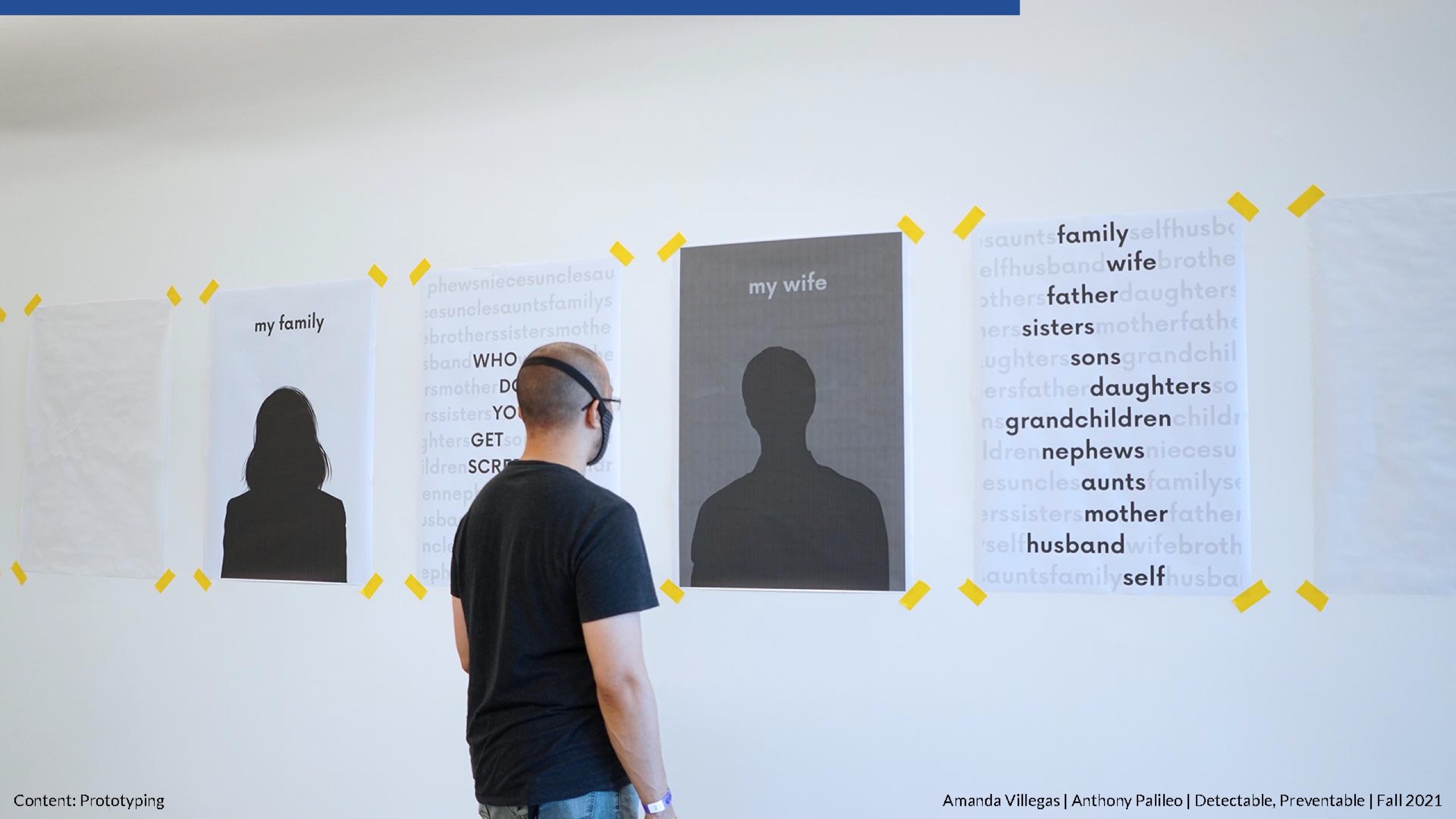
“It’s a mixed blessing that there is no shortage of timely and critical challenges for our students to engage with in our Designmatters Transdisciplinary Studios. These real-world partnerships provide our students with a very satisfying and meaningful studio experience. In this case, the increased risk of colon cancer in the Filipino-American community builds on a natural empathy within the students, often based on their own lived experience. Their work has real-world consequences and, in this particular studio, the potential to save actual lives as it moves toward implementation in the community. There’s a mutual trust between the partner and the Designmatters staff, faculty, and our students. We are fortunate that we get to do this kind of work.”
— Leigh Hoffman, Faculty
Workshop with James Rojas
Students and guests from the Filipino community who work in health care – Catherine Rubio, Evelyn Andmao and Adel Domingo – participated in a virtual workshop given by James Rojas, founder of PlaceIt! Workshops and the Latino Urban Forum.
Participants examined how favorite memories typically involve connections with family and friends in specific locations. These memories, Rojas contends, need to be the basis of city planning and the foundation of healthy communities. Rojas invited participants to consider what makes up a healthy community which revealed common themes of safety, security and equity – all in the context of relationships and connecting with each other.
Following the session, students met with guests in breakout room to ask specific questions about their interactions with community members. “How do you talk about illness and disease with patients?” “Are there areas we should stay away from?” “How best to use humor?” “How far can you nudge?”
Following the workshop, student teams continued their research, gathering and synthesizing information and pinpointing possible partnerships and possibilities. Teams conducted research online and in-person, visiting Filipino American community hubs, cultural centers and events.
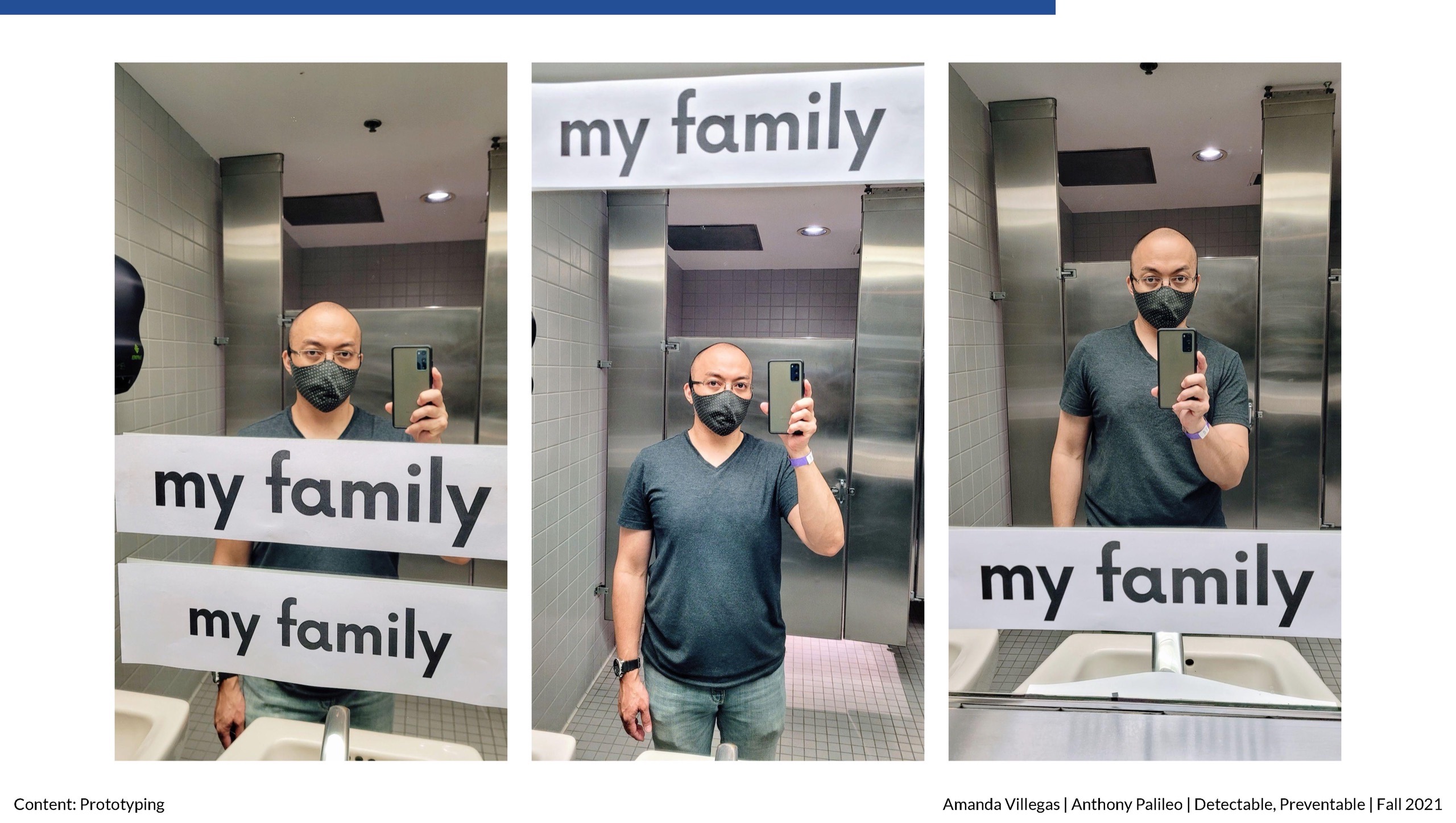
“From this Designmatters studio, I learned that research, especially if it’s about a specific culture, is very necessary in order to not appropriate or misrepresent a certain group. There are times throughout this project where I’ve misrepresented Fil-Am culture without even knowing, but it was upon further research that I knew I was wrong. I learned the lesson of ‘Always do research to get things right.’”
— Holly Chiu, Illustration student
Research Review
At a Research Review Presentation, student groups shared their interpretations of the issues, outlined themes and insights gathered so far along with possible areas of opportunities. Personas were created. Teams offered initial directions that involved a range of concepts including photography, posters, pop-up events, digital applications, board games and hand fans. Finally teams suggested other questions and next steps they would like to continue to explore.
Cedars Sinai partners offered constructive feedback and reminded students to “Keep the bigger picture in mind,” since the overreaching goal is to increase screenings. The creative discussions (“How about…” “What if…” “Maybe you can..”) got the students excited about moving forward with a better sense of how they could refine their campaign for a stronger message. Students realized they need to carefully address the discomforting fact that the subject matter can be off-putting to many.
Teams were applauded for their innovations but were pushed to consider using humor and avoid scare tactics and guilt to change habits.
Instructors directed teams to think of their campaigns as an entire system with different platforms that all have the same messaging. Also, instructors suggested that teams discover what platforms (analogue and digital) already exist which they could infiltrate and/or partner with to help deliver the message more directly to the Filipino community.
Working toward a midterm presentations, student teams once again latched onto specific issues that would be foundational elements for their campaigns. In addition to weekly assignments and readings, teams continued to flesh out ideas, compare their concepts to other successful campaigns and examine their thinking through the lens of their target audience.
Midterm presentations
At this half-way point in the term, students presented their concepts to partners and community members; teams encapsulated their research and field work findings, described their audience and provided questions that propelled their ideation. Three possible conceptual directions were shared that featured details such as locations, campaign names and specific design elements (color, style, etc.). Teams showed how their personal interviews and observations were the basis for their ideas.
Once again, teams received constructive feedback; partners questioned students about their choices, offered suggestions on how to layer other cultural references into their projects, and provided inspirational motivation for them to continue. In turn, students asked which of their three directions seemed the most appropriate to pursue.
As teams reflected on the feedback and continued their campaign design, they pushed forward to incorporate a more specific direction. Many teams designed prototypes and field tested spatial designs that would accompany their campaign events.
Teams were encouraged line up all their various elements – digital, sound, motion, print graphic, spatial, etc. – to make sure their campaign was cohesive, feels unified and presented a compelling and fun reason for getting screened. Students carefully analyzed how graphics can emphasize distinct elements and culturally-relevant typography can accentuate the campaign.
The goal was to present a unifying and inviting campaign that would address the Filipino American community and, through events and in-person interactions, would compel participants/viewers to see the necessity of scheduling a colon cancer screening.
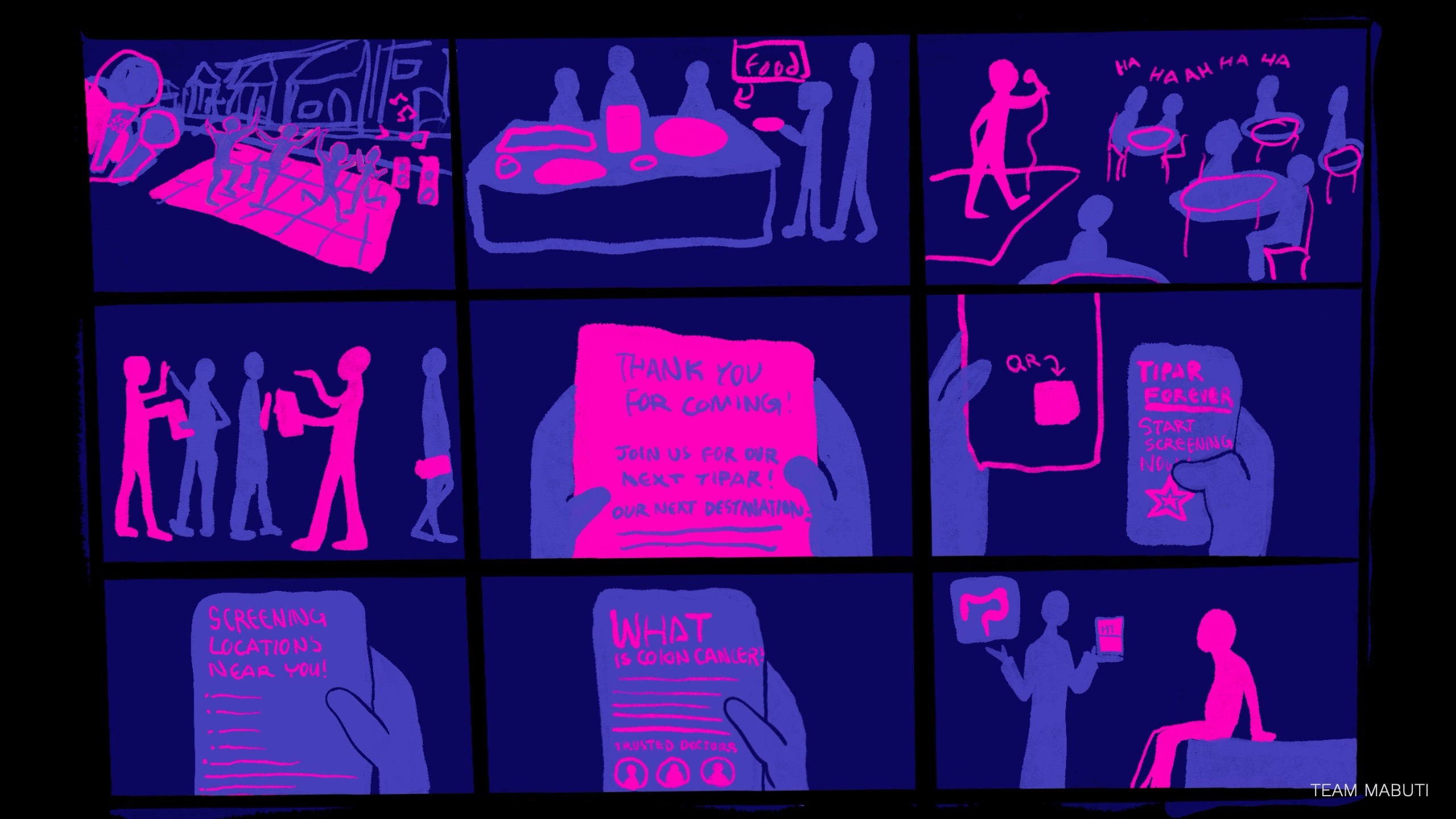
“Culture is not a checklist.”
— Melissa Liu, Faculty
Outcomes
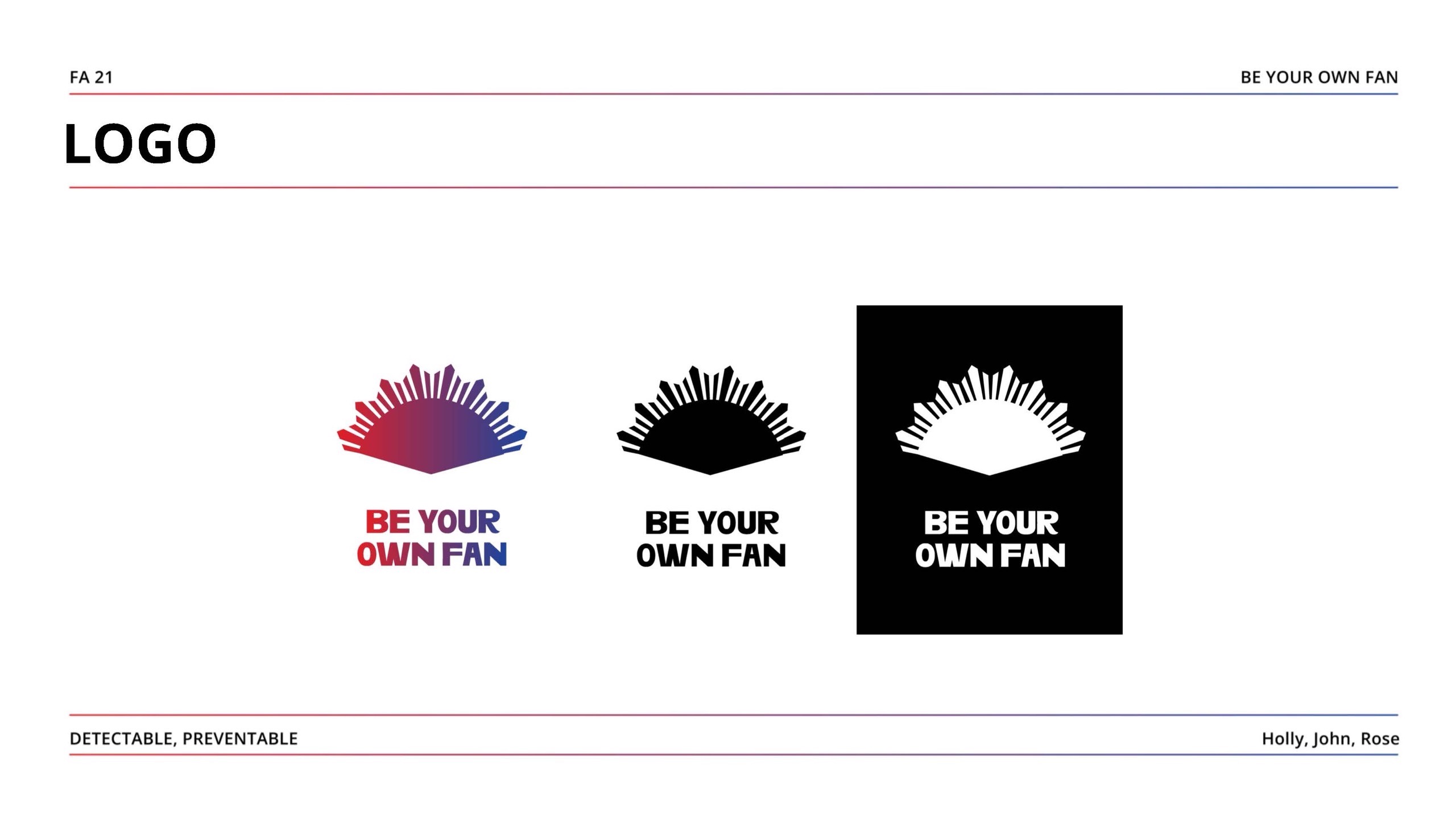 close
close
Be Your Own Fan
Read moreHolly Chiu, Rose Kim, John Ma
This campaign incorporates the cultural symbol of the abaniko, a traditional Filipino hand fan, to inspire the Fil-Am community. The logo is inspired by the Filipino flag; the sun motif and the gradient colors. Free in-person fan giveaway events are envisioned and will be supported by a two-pronged marketing approach: social media posts (attracting both adults and youth with stickers) and printed posters with detachable elements that create small hand-sized fans.
Giveaway locations include prominent gathering places for the community: Filipino Cultural Center, Unidad Park and St. Lorenzo Ruiz Church. Colorful large fan-like display spatial graphics will attract attention around three portable tables. One table features the free fan giveaways; another holds cancer screening information – including branded FIT home test kits. The third table features swag (t-shirts, tote bags, pins, foldout mini-posters) and supplies/materials for visitors to create their own fan.
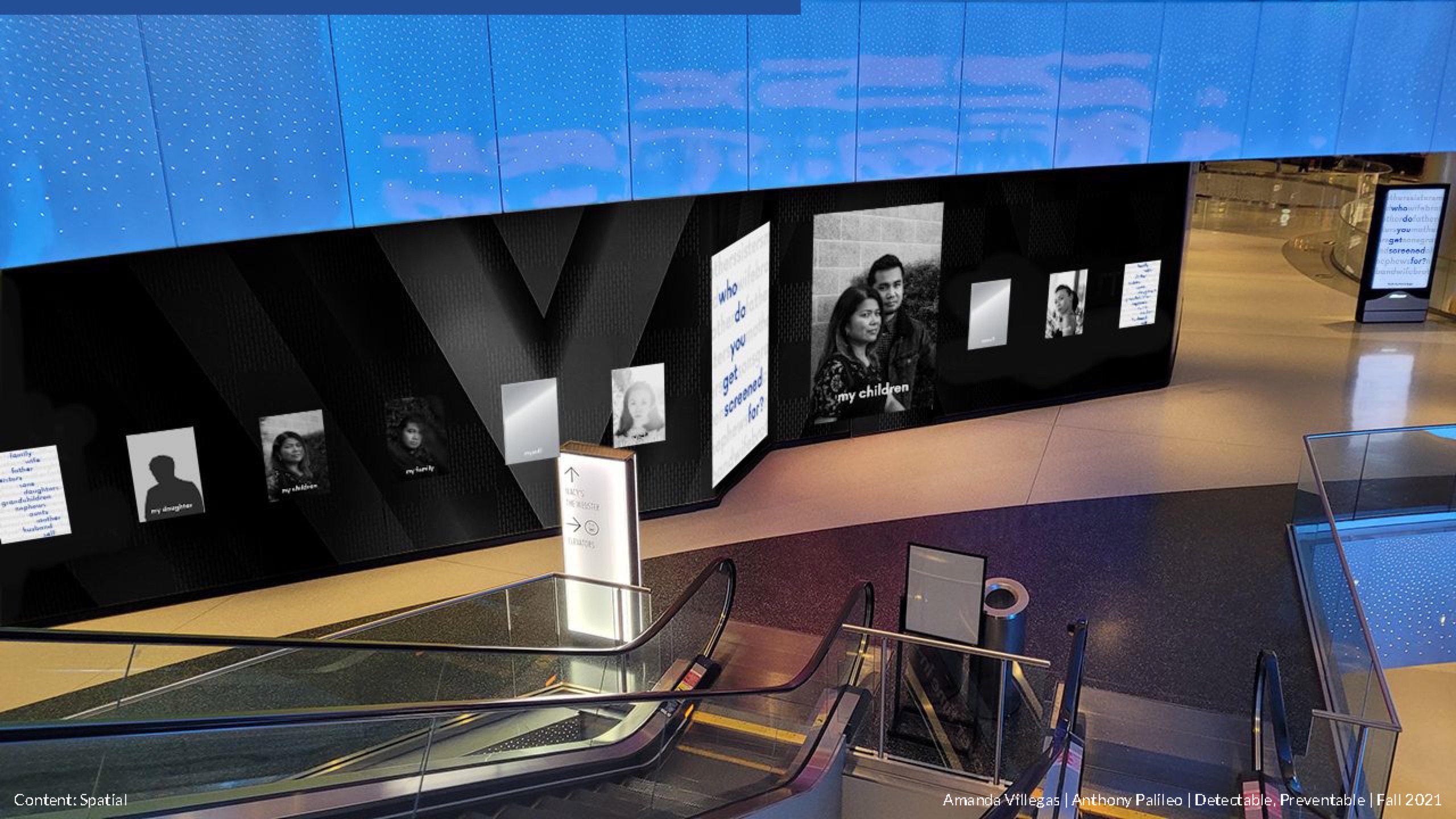 close
close
Who Do You Get Screened For?
Read moreAnthony Palileo, Amanda Villegas
Linking storytelling with visuals, this photographic-driven campaign involves dramatic black and white images of local Fil-Am community members in an art-gallery type presentation that can be implemented in shopping malls, medical centers and other appropriate public locations. Subjects’ responses to the prompt, “Who Do You Get Screened For?,” are also on display in the exhibition (“For my family,” “My kids,” etc.). Mirrors will also be incorporated in the exhibition so viewers can see themselves as participants rather than mere spectators.
Via a branded website, the photographic images will be featured digitally along with personal cancer stories/essays, quick colon cancer facts and screening information.
When appropriate, the exhibition presentation can involve large digital screens that are often found in shopping areas. Promotional items include a folded poster handout that gives an overview of color cancer and treatments. Shopping bags/totes can also feature the beautiful photographic imagery.
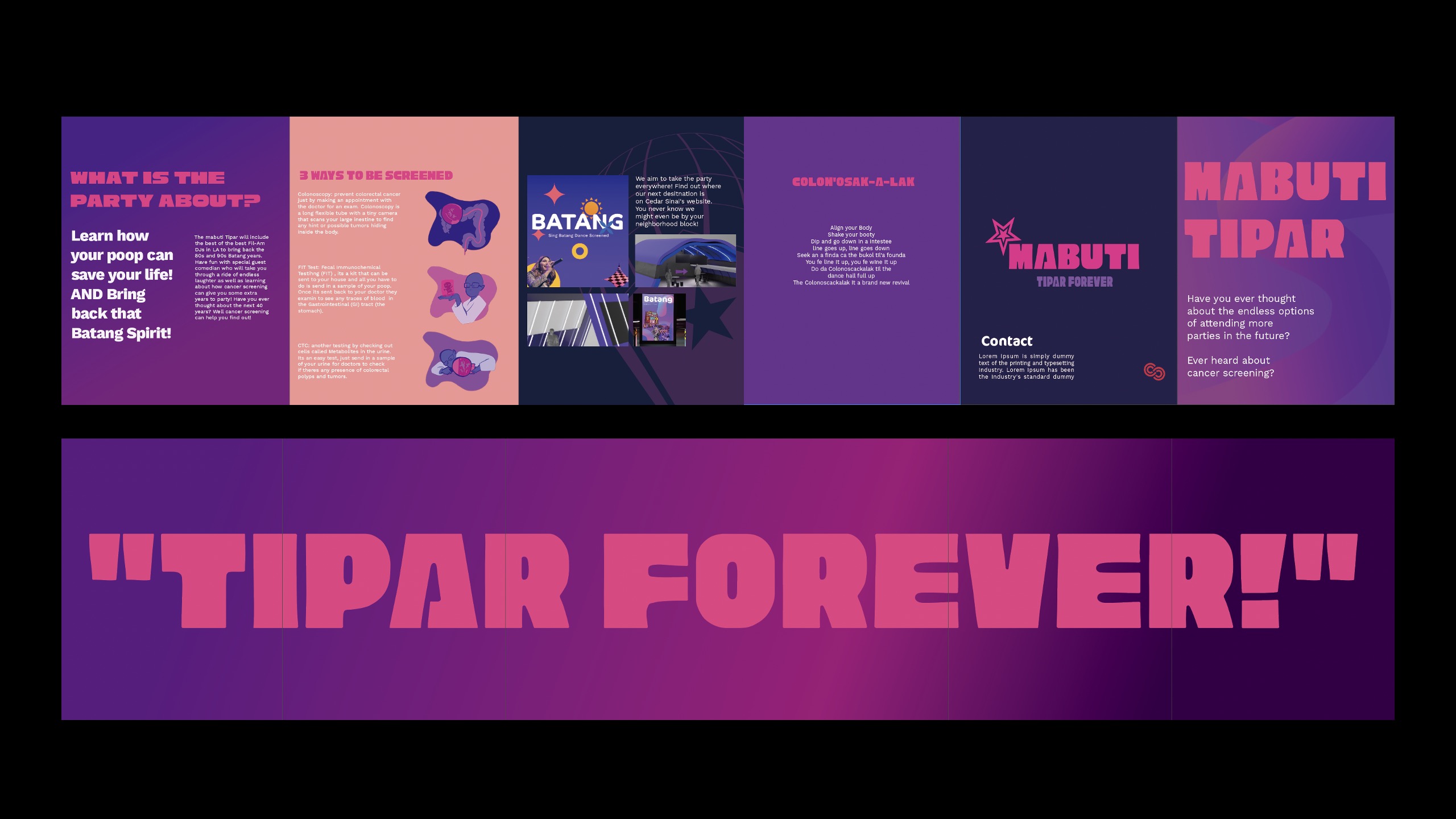 close
close
Mabuti – Tipar Forever
Read moreNaomi Nakamura, Steven Mao, Ziyi Zhou
Targeting 40+ Fil-Am members who enjoy weekend parties, this campaign involves an in-person gatherings that features music, dancing and food. Posters, social media and a branded website will drive interest and attendance to these Mabuti (good and healthy) dance parties. The logo incorporates a simple star/ microphone with neon pinks and purples. Along with collage-style printed posters of various sizes, rolling motion graphics depict the party slogan of Tipar Forever and can be projected on exterior and interior walls.
Small brochure-like posters explains the reason for the party; cancer screening information is presented with colorful graphics and includes fun song lyrics that party-goers can sing along at the event. AR digital stickers are playful and eye-catching and incorporate the purple and pink motifs.
The party location employs inflatable spaces with a curved roof to mimic a colon. Party-goers, who have learned about the event from a QR code/website, walk through a long tunnel to enter the festive environment. After-party flyers describe upcoming events in addition to encouraging participants to get screened.